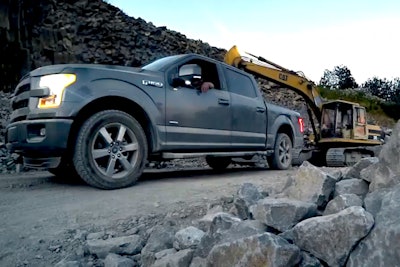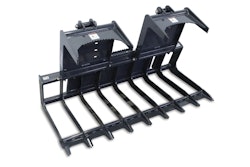
If you haul or tow heavy loads as a part of your business, there are various numbers that you need to pay attention to and realize that no suspension upgrades to your vehicle will change these numbers.
It’s also important to note, exceeding these ratings set by the vehicle manufacturer exposes the vehicle driver and company to serious liability issues:
- Gross Axle Weight Rating or GAWR, is the maximum distributed weight that can be supported by a given axle. This figure is set by the vehicle manufacturer and cannot be changed.
Front and rear axles each have their own individual GAWR and the figure takes into account the weight of the vehicle, fuel carried, passengers, weight of cargo and tongue weight (if you are towing). GAWR is fixed and never changes.
The load placed on an axle changes as when cargo is added or unloaded, or moved ahead or behind the rear axle housing. This includes adding the weight of the trailer tongue.
Using a weight-distributing hitch when towing heavy trailers helps transfer trailer tongue weight from the rear axle to the front.
- Gross Vehicle Weight Rating or GVWR is the maximum allowable weight of a vehicle taking into account the weight of the vehicle, passengers, fuel and cargo. This figure is set by the manufacturer and cannot be changed.
For example a standard cab, two-wheel drive 2012 Ford F-150 with a 145-inch wheelbase and powered by a 5.0 liter V-8 has a GVWR of 8,200 lbs. (with heavy duty payload package), which includes the 5,080 vehicle weight and a maximum payload of 3,120 lbs.
The payload figure includes everything else: the weight of passengers, laptop, added accessories, tools, fuel and any cargo being hauled in the box.
While the loads hauled in your truck may vary, the GVWR does not.
However, the Gross Vehicle Weight (GVW), the weight of the vehicle at any given moment is constantly changing as you burn fuel, as well as load and unload cargo and passengers.
- Gross Combined Weight Rating or GCWR is an important number to pay attention to if you are towing a trailer. The GCWR is set by the vehicle manufacturer and is the maximum allowable weight of the combination of the tow vehicle and trailer. This figure is set by the manufacturer and cannot be changed.
According to the engineers at Ford Motor Company, this figure is determined by adding together the vehicle’s listed curb weight, allowable payload, driver and passenger weight and trailer weight (with load).
It is not a measurement of weight of the tow vehicle and trailer but the combined maximum weight limit of the two separate vehicles, once they are attached together.
Note: Exceeding the GCWR—even for just a few miles—is exceedingly dangerous and can lead to overheating brakes, strain on the suspension and axles, extra stress on the tires leading to blowout, and more. Keep your truck and trailer within GCWR at all times.
EDITOR’S NOTE: This was written by Equipment World’s staff, a sister publication of Total Landscape Care.









